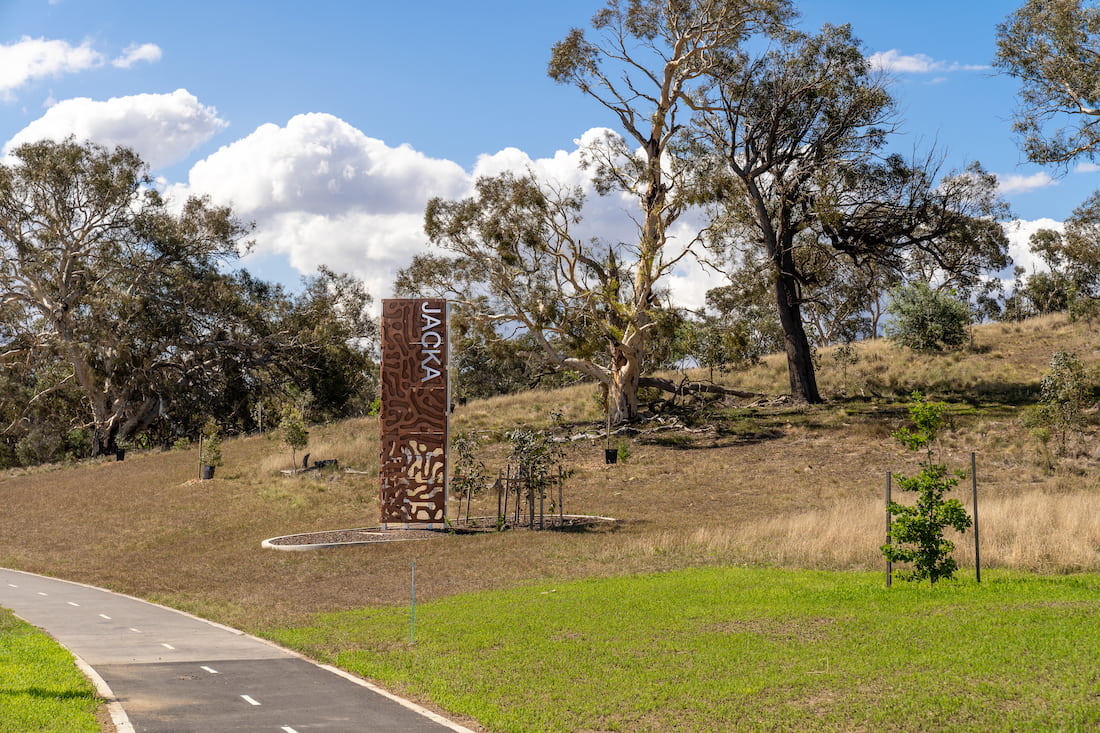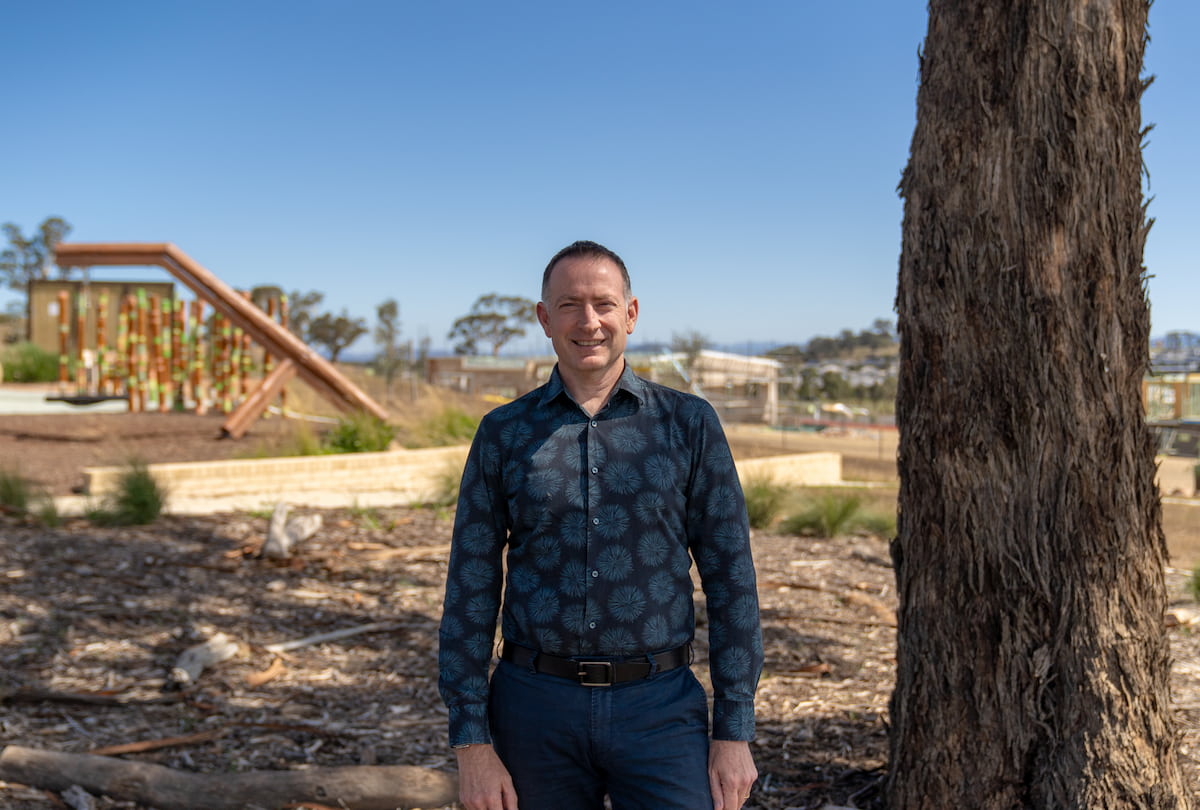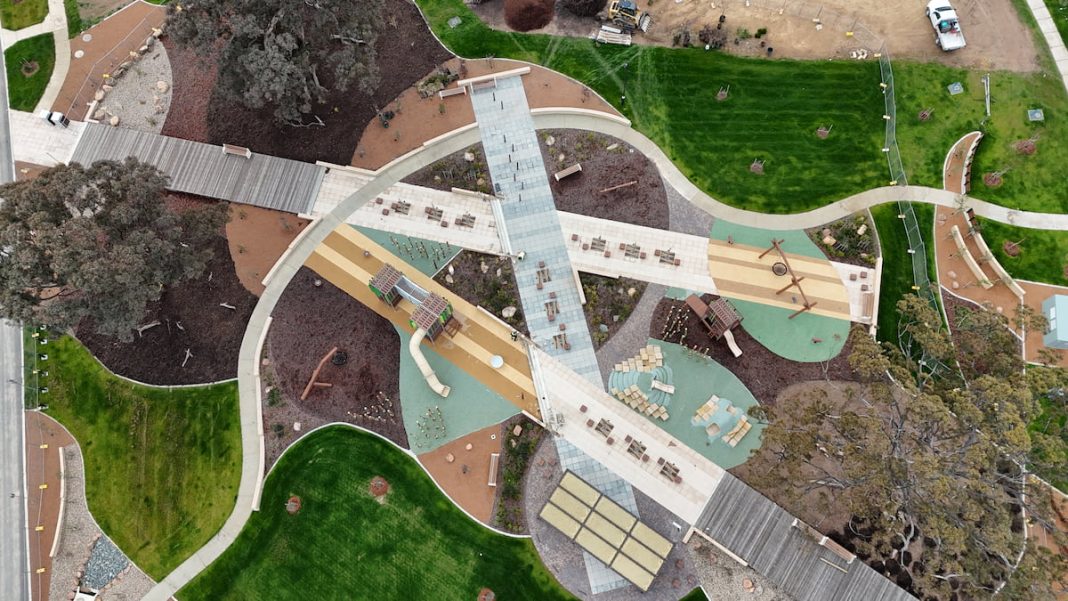Work is underway on the ACT’s newest suburb: Jacka.
Jacka is a new small-scale neighbourhood nestled in the Gungahlin area that nurtures sustainable and connected living just 20 kilometres north of Canberra’s city centre.
Suburban Land Agency (SLA) chief executive officer Adam Davey said that once completed, the 700 dwellings would house about 1,800 people.
“Jacka is new – it’s quite amazing because it’s been developed so there are roads and a couple of parks, walking trails and landscaping,” he said.
Mr Davey said Jacka has been designed to offer a variety of housing options: 55 per cent are single dwellings, 15 are medium density and 30 per cent are high density.
Nature is a big focus of the space, with Jacka residents able to enjoy 70 per cent open spaces and 30 per cent tree canopy.
The design also ensures Indigenous native trees, bushes and plants are planted to create a seamless relationship with the surrounding hills and bushland.
Most homes in Jacka will be centrally located, close to the future local centre.
Interconnected pathways and trails will encourage healthy living and close community ties. SLA’s dedicated Mingle team will be on the ground building up community programs to create long-lasting connections.
Why Jacka appeals to buyers
Mr Davey said that while Jacka will have its own shops and local centre, being less than five kilometres from the centre of Gungahlin means there is access to existing schools, shops, and group centres.
He said the housing showcased modern infrastructure and design.
“That’s appealing – a new suburb that has all fresh infrastructure, internet, it’s all-electric, so it’s very modern,” Mr Davey said.
“We are also offering rebates for people to go electric and solar.
“Building your dream home, a lot of people aspire for that opportunity, and this is one of those opportunities.”

He said the suburb was also close to everything residents needed at their fingertips, from amenities and shops to schools, medical centres and recreational facilities.
“Another appeal is the connection to nature,” Mr Davey said.
He said the design incorporated parks and walking trails.
“We didn’t flatten the ground, so the hills and ridges remain, giving you some surprising views,” Mr Davey said.
“The walking trails are very attractive and it’s very close to the Canberra Centenary Trail that goes all the way around the city – you can spend three days walking around Canberra.
“Using the walking or bicycle trail, you can easily go for nice bushwalks – there are lots of surprises!
“There are the connections to nature which I think will appeal to people that don’t want to live in the city.”
Mr Davey said affordability is a huge challenge, so the available blocks, between 375 to 490 metres squared, start from as low as $519,750.
“Comparing that to our Whitlam and other developments, the pricing might also be an attraction to people,” he said.
All electric, no gas
Jacka is SLA’s third all-electric suburb, following Whitlam and Strathnairn.
“This is our future. It’s contemporary being all-electric,” Mr Davey said.
He said incentives are on offer to residents interested in being more energy efficient when purchasing blocks in Jacka.
A $7,000 energy rebate is available, which will be distributed by SLA.
Mr Davey said purchasers were also being encouraged to have light-coloured roofs, a minimum 6.5-kilowatt solar system and an energy-efficient water system.

He said up to $7,000 is also on offer for purchasers for front garden landscaping to encourage climate-wise gardens.
“That’s quite a good incentive – for Jacka – it’s unique to that suburb,” Mr Davey said.
With the ACT transitioning from fossil fuel gas to renewable electricity by 2045, Mr Davey said the residential development would not include dwellings connected to gas.
The need for housing in the region
Mr Davey said Canberra’s population is steadily increasing because people move to the country’s capital for work opportunities and the way of living.
“Canberra is forecast to grow to half a million by 2027 – it’s growing, and we need to continue providing housing,” he said.
“The Gungahlin region will continue to experience growth and is expected to increase its population by around 8,200 people between now and 2028/29.”
He said 70 per cent of the residential land released was urban infill (redevelopment within established urban areas, typically using previously undeveloped or underutilised land, or redeploying previously developed land), and 30 per cent of greenfield (starting from scratch on the urban edges).
“Not everyone wants to live in a city in an apartment; many still want a freestanding house,” Mr Davey said.
Project timeline
Mr Davey said construction began in 2023 with 12 homes currently being built.
“That will continue – we’ve almost got the first resident in!” he said.
“So it’s early-2025 and people are starting to move in.”
Mr Davey said there are currently 40 blocks available, with more set to be released online soon.
“When they’re gone, they’re gone. It sits within an existing series of suburbs, like Gungahlin, so this is a great opportunity,” he said.
“It’s the final suburb in that part of Canberra to be developed.”
He said construction on the remaining dwellings was expected to take at least the next two to three years.
Mr Davey said land has been released for a local centre, with a mixed precinct of shops and housing.
“That might take a couple of years until that’s ready to go,” Mr Davey said.
The people behind the project
The Suburban Land Agency is part of the ACT Government and is passionate about building connected and vibrant neighbourhoods across Canberra.
Their vision is to create sustainable places where communities and environments thrive.
SLA aims to support affordable living, a safe and healthy population, social inclusion and diversity, housing choices and environmental sustainability.
To make an enquiry on the land available to purchase, head to suburbanland.act.gov.au/jacka/land-sales



